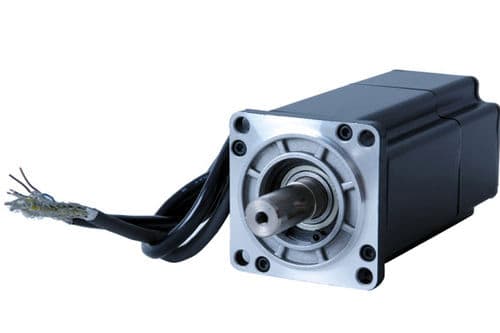
Are you looking for an electric motor to power your project? Servo and DC motors are the most popular options, and ACS Industrial Services is more than happy to help you know the difference. We specialize in solving the toughest repair challenges, including servo drive, valve, and motor repairs. In this blog, we discuss the difference between servo and DC motors to help you choose the ideal one for your project.
What is a Servo Motor?
A servo motor functions as a linear or rotary actuator. The motor is ideal for accurate control of angular or linear acceleration, position, and velocity. Servo motors consist of a positioning sensor, DC motor, gearing set, and a control circuit. This motor is ideal for more exact tasks since you can control the motor positioning more precisely than a DC motor. Servo motors are available in two types; DC and AC servo motors. The latter is ideal for large applications, while the former is used in small electronic devices like camera autofocus systems and robotic joints.
What is a DC Motor?
A DC motor uses ground and power wires to produce a continuous rotation. DC motors run at high revolutions per minute (RPM) and rotate continuously until you detach the power. However, the speed depends on the electric output and motor design. DC motors are used in electronic devices, cars, elevators, and power tools.
Difference between Servo and DC Motors
Here are the primary differences between servo and DC motors.
Wire System
Servo motors have three wires, namely power, control, and ground. The cables are color-coded. The red wire is the DC supply lead, the black one provides ground, and the third one provides control, and the color varies depending on the manufacturer. On the other hand, the DC motors have two wires; power and ground. The DC motor takes electric power through direct current and converts it into mechanical rotation.
Components
The servo motor consists of the motor, encoder, and driver. The servo driver compares the position command while the encoder controls the position or speed information and the drive current. A DC motor consists of a stator and an armature. The stator is stationary while the armature rotates. When you power the DC motor the stator creates a magnetic field that rotates the armature.
Rotation
A servo motor will turn up to 900 in either the clockwise or anti-clockwise direction for a total of 1800 movements. A DC motor creates a magnetic field in the stator when powered. The field attracts and repels magnets on the rotor to make a continuous rotation.
Contact ACS Industrial Services for Servo Motor Repairs
While both servo and DC motors have pros and cons, the speed, superior precision, and control of the former make it an ideal choice for many applications. Our specialists at ACS Industrial Repairs specialize in servo-drive repairs. We have the latest diagnostic repair equipment and can service drives from most manufacturers.
When you choose ACS Industrial Repairs for your servo repair needs, you can expect real people, honest work, and accurate results. Our technicians are more than just skilled professionals. We showcase the dirty, gritty work + magic that gets electronics back up and running. We don’t just assign a job number and leave it at that – we understand the importance of personalized attention to each client.
We’ll help you solve your electronic equipment problems with free evaluations, accurate quotes with no obligation, expert repair service, and support. Please call us at 800-605-6419 or visit our website for more information.
